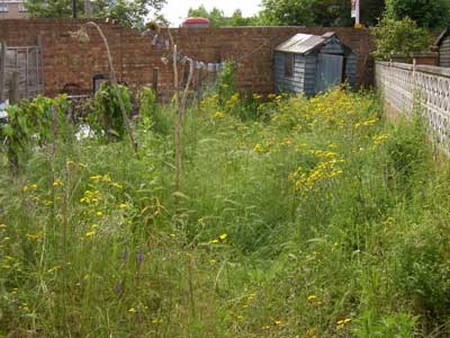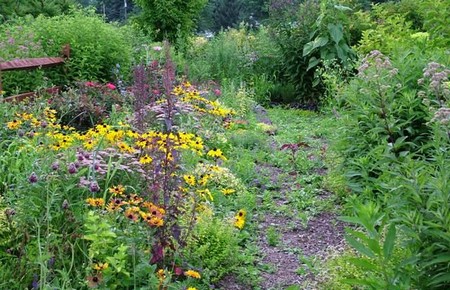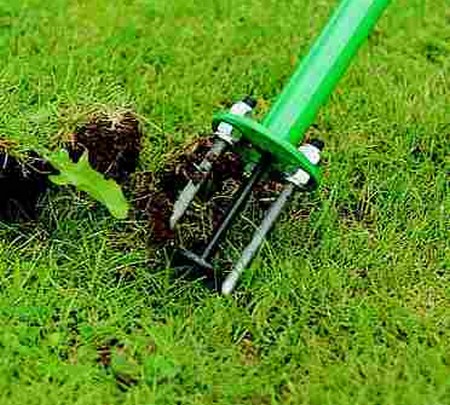Best Way to Control Weeds in Your Vegetable Garden
Weeds compete with your plants for moisture and nutrients so you need to control them promptly, otherwise crop yield will be adversely affected. Some weeds can also harbour pests that then move on to growing crops.
Tackling a large, neglected plot full of perennial weeds such as a disused allotment is very hard work, and you may want to use a weedkiller to get a head start even if you plan to grow vegetables organically eventually. Once the cultivated ground is more or less weed-free, it can be kept that way without using chemicals at all.
Clearing weedy ground
When perennial weeds have got the upper hand, it is an uphill struggle to get rid of them. Even though you may have dealt with the top growth, the plants may regrow from tiny fragments of roots or stems left in the ground. A petrol rotovator can make the problem worse by cutting up the roots and spreading them around the plot.
There are three recommended ways of clearing weed-infested ground.
Covering – Cut back the top growth of the weeds, then cover the ground with black polythene sheeting or old carpet. Provided the cover is kept in place for at least a year, the weeds will die. This is the easiest way to clear a plot if you can afford to wait a year.
Spraying – A quick method is to use a systemic weedkiller such as glyphosate to kill weeds. This travels down to the roots and kills the weeds within a few weeks. You may need to apply the weedkiller more than once if the weeds re-grow. Glyphosate breaks down rapidly on contact with the soil so you will be able to plant within weeks. To improve the effectiveness of glyphosate, cut the weeds back, wait for a flush of young growth, then spray. The ideal time to treat weeds with systemic weedkiller is in late spring to early summer, when the weeds are growing rapidly. Take care to avoid spray drifting on to other plants.
Digging – The traditional method of clearing a new vegetable plot is to dig it over and remove every piece of perennial weed root by hand. It is very time-consuming but if done thoroughly should remove most perennial weeds. Deep-rooting weeds such as bindweed will need persistent removal over several years.
Keeping beds weed-free
Once you have cleared the beds of perennial weeds, you will still need to be vigilant. Annual weeds produce seed in vast quantities, and these lie dormant in the soil for many years. Cultivating the soil by digging will bring weed seeds to the surface, where they will germinate, grow and set more seed. Some annual weeds, such as chickweed, flower and set seed remarkably quickly, so it is vital to control them promptly. You can keep weeds down in several ways.
Loose mulches will prevent light reaching weed seeds and triggering germination. Covering the soil surface with a 5cm layer of loose mulch is recommended. Garden compost can be used, provided it is weed-free; well-rotted farmyard manure or composted green waste are economical alternatives for a vegetable plot. For an ornamental border, chipped bark or cocoa shells are attractive but rather expensive.
Sheet mulches are another way to keep beds and paths weed-free. The sheet is laid over the soil and the edges secured. Sheet mulches are effective at keeping paths between beds weed-free in the long term. Use them on their own or under paving or gravel. Widely spaced crops such as courgettes, sweetcorn and potatoes can be grown through sheet mulch – cut a cross in the sheet, fold back the four triangular flaps, dig a hole and plant. Woven polypropylene sheet mulch is easy to handle and allows water through; black plastic is cheaper but you will need to put some holes in with a garden fork, otherwise rain will collect in puddles on the top. Double layers of newspaper work in the short term.
Hoeing is an excellent way to get rid of small annual weeds and is particularly useful for closely-spaced vegetables where mulching is not practical. As soon as a seedbed is prepared or the ground is dug over, a flush of annual weeds will appear. Even if these are removed, any soil left empty will be quickly taken over by weeds. Use a Dutch hoe for weeding between rows or a swoe (this has a blade shaped like an elongated golf club) among wider-spaced vegetables. Keep the blade sharp so it skims along the surface of the soil, severing the weeds. The most effective time to hoe is early in the morning on a hot, dry day, when the hoed weeds will quickly shrivel up.
A quick way to get rid of annual weeds before sowing or planting is to prepare the seedbed and cover it with a cloche or sheet of clear plastic. Weeds will germinate within a couple of weeks and can be hoed off. Hand weeding is the best way to remove weeds growing in amongst rows of seedlings or in other confined spaces. You can pull up annual weeds with your finger and thumb. Remove perennial weeds with their roots, otherwise they will simply regrow. A hand fork can be used to ease them out, and a number of short-handled tools are available, such as onion hoes. Hand weeding is most effective if done when the soil is moist, when weeds are young and before they set seed.
Categories
Advertisements
Recent Articles
 How to Understand Bed Sizes – A Small Guide
How to Understand Bed Sizes – A Small Guide How to Select Some Must Have Kitchen Accessories
How to Select Some Must Have Kitchen Accessories Best Way to Change a Car Tire
Best Way to Change a Car Tire Best Way to Write an Affirmation
Best Way to Write an Affirmation Best Way to Take Charge of Your Financial Life
Best Way to Take Charge of Your Financial Life Best Way to Survive a Party When You Don’t Know Anyone
Best Way to Survive a Party When You Don’t Know Anyone Best Way to Stop Self Sabotaging Yourself
Best Way to Stop Self Sabotaging Yourself Best Way to Start Journal Writing
Best Way to Start Journal Writing Best Way to Speak with a Powerful Voice
Best Way to Speak with a Powerful Voice Best Way to Simplify Your Life
Best Way to Simplify Your Life Best Way to Respond to a Put-Down
Best Way to Respond to a Put-Down Best Way to Reduce Acne Breakouts
Best Way to Reduce Acne Breakouts Best Way to Recover from Dining Disasters
Best Way to Recover from Dining Disasters Best Way to Quit Your Job Gracefully
Best Way to Quit Your Job Gracefully Best Way to Make Your Own Website
Best Way to Make Your Own Website




Leave a Reply